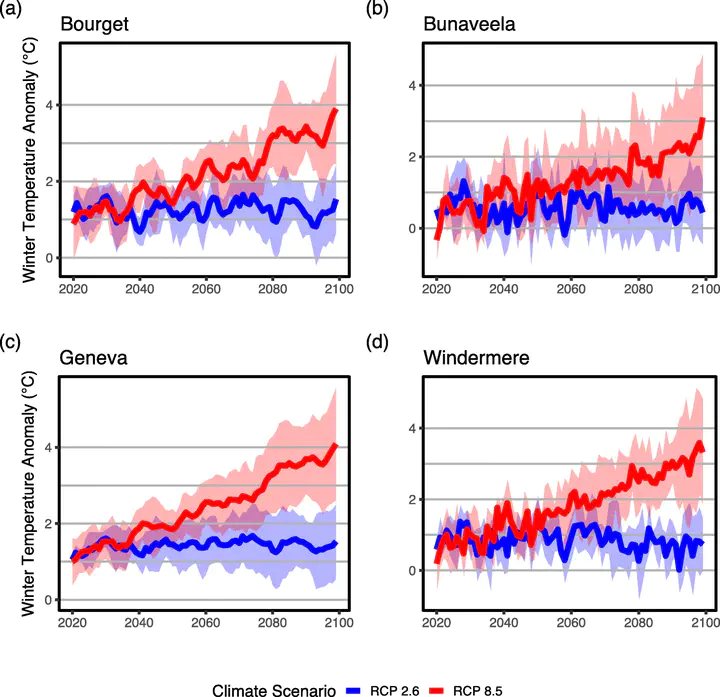 Projected timeseries of mean winter temperature anomalies at spawning depths for 2020–2099 for RCP 2.6 (blue) and RCP 8.5 (red).
Projected timeseries of mean winter temperature anomalies at spawning depths for 2020–2099 for RCP 2.6 (blue) and RCP 8.5 (red).
Abstract
As the global climate warms, the fate of lacustrine fish is of huge concern, especially given their sensitivity as ectotherms to changes in water temperature. The Arctic charr (Salvelinus alpinus L.) is a salmonid with a Holarctic distribution, with peripheral populations persisting at temperate latitudes, where it is found only in sufficiently cold, deep lakes. Thus, warmer temperatures in these habitats particularly during early life stages could have catastrophic consequences on population dynamics. Here, we combined lake temperature observations, a 1-D hydrodynamic model, and a multi-decadal climate reanalysis to show coherence in warming winter water temperatures in four European charr lakes near the southernmost limit of the species’ distribution. Current maximum and mean winter temperatures are on average ~ 1 °C warmer compared to early the 1980s, and temperatures of 8.5 °C, adverse for high charr egg survival, have frequently been exceeded in recent winters. Simulations of winter lake temperatures toward century-end showed that these warming trends will continue, with further increases of 3–4 °C projected. An additional 324 total accumulated degree-days during winter is projected on average across lakes, which could impair egg quality and viability. We suggest that the perpetuating winter warming trends shown here will imperil the future status of these lakes as charr refugia and generally do not augur well for the fate of coldwater-adapted lake fish in a warming climate.